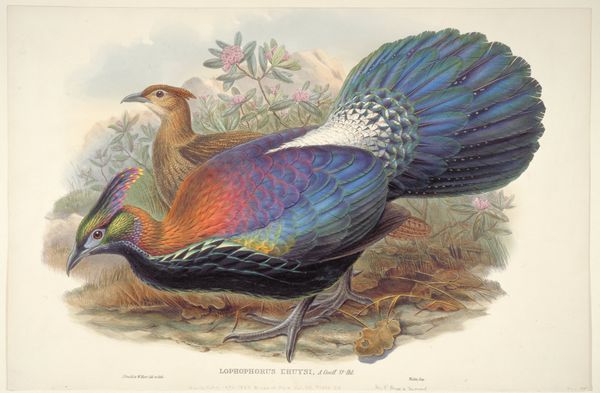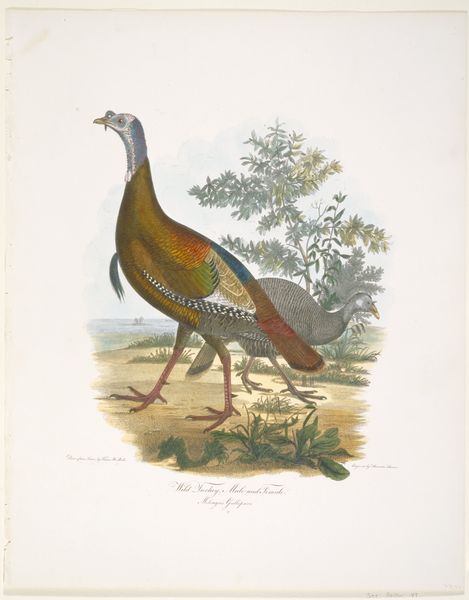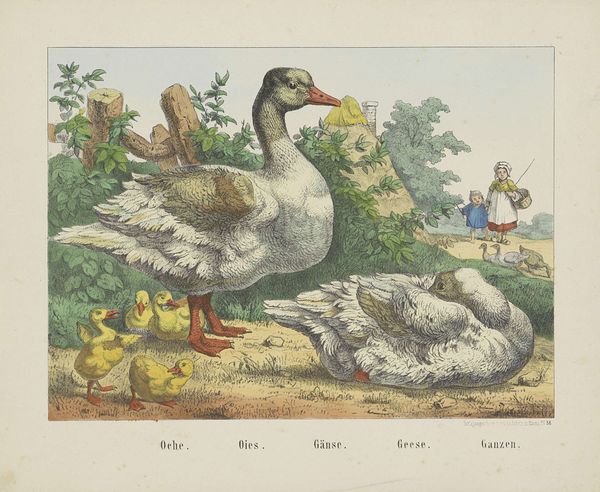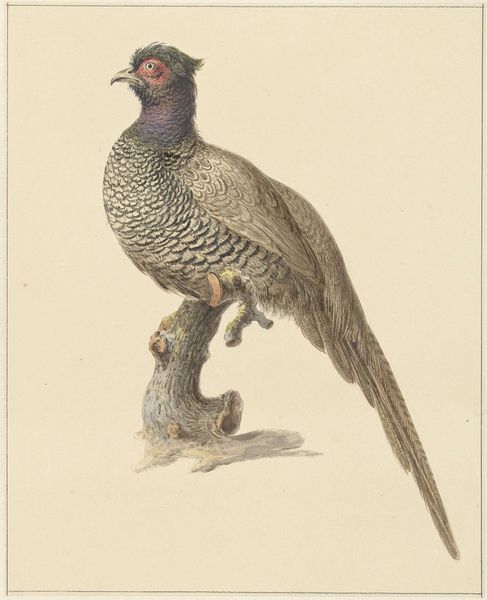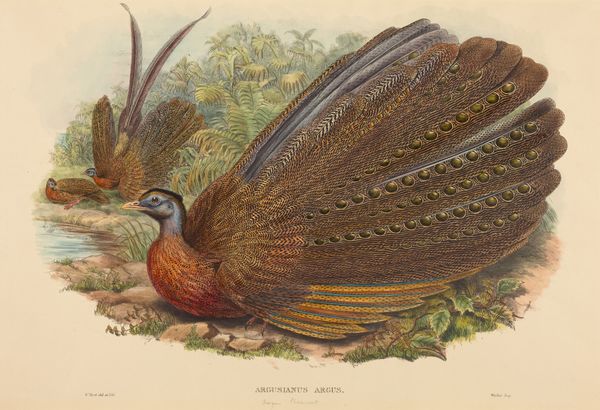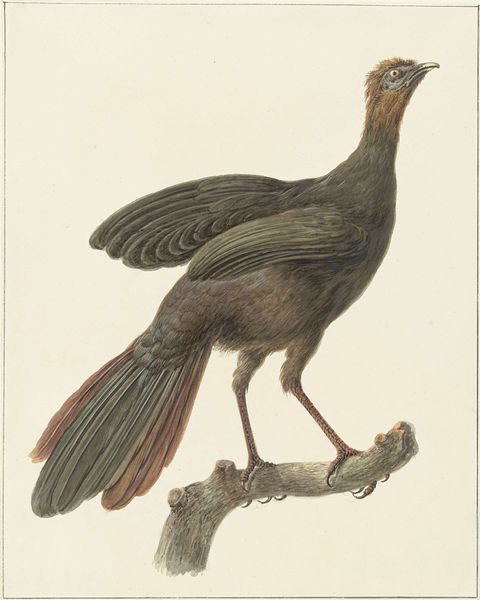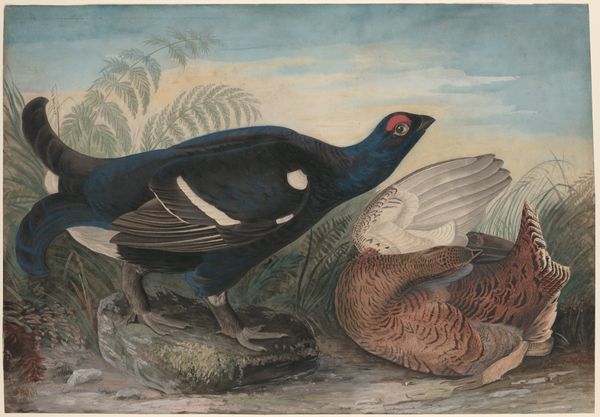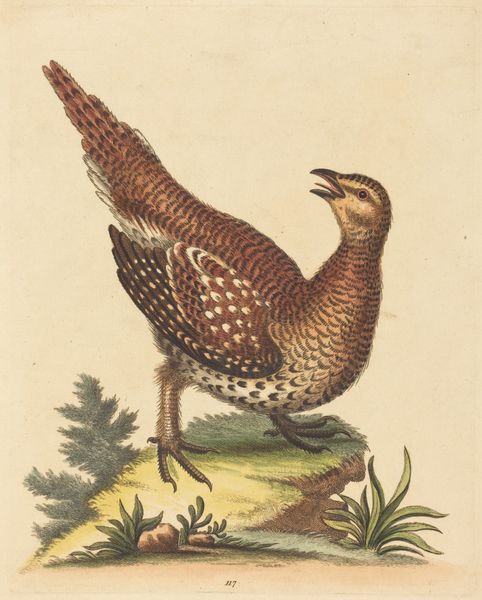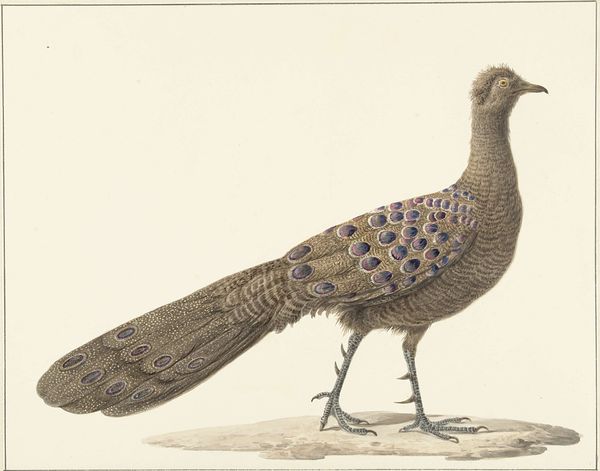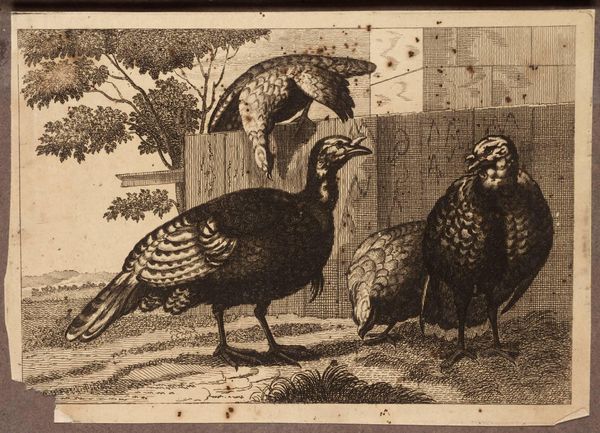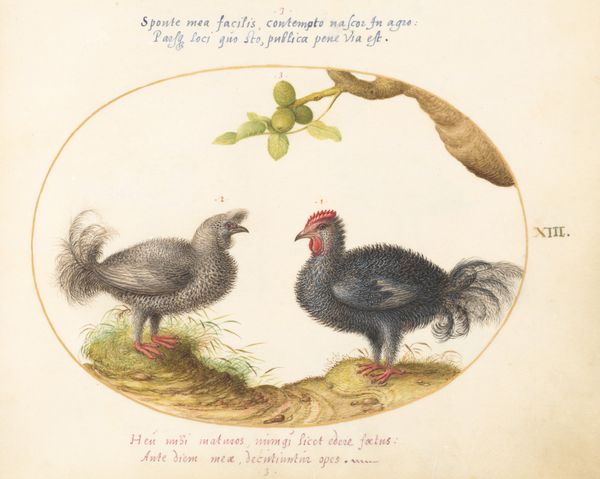
print, watercolor
# print
#
landscape
#
watercolor
#
watercolour illustration
#
realism
Dimensions: height 350 mm, width 428 mm
Copyright: Rijks Museum: Open Domain
Curator: Let's consider this delightful print held here at the Rijksmuseum. It’s called “Faisans,” “Fasanen,” or simply “Pheasants,” depending on your language, crafted by the firm Joseph Scholz sometime between 1829 and 1880. The image appears to be a watercolor print depicting a family of pheasants. Editor: My first impression is of charming domesticity—the close-knit arrangement of the pheasant family creates a sense of warmth, of being encompassed and safe. Curator: Yes, there is definitely an intentionality to it, a visual commentary on familial harmony which speaks to broader social values during the period in which it was created. You see such sentiments being woven into many different types of visual arts from this time. Editor: I see it especially in the arrangement of colours. The golden hue of the chicks, contrasted against the cooler greens of the foliage, adds a subtle sense of liveliness to what might have otherwise felt static. It keeps the eye moving within the frame. Curator: Absolutely. Consider also that this print likely served a didactic purpose beyond mere aesthetic enjoyment. Prints such as these would often have been used for educational purposes, helping to foster an understanding of the natural world but always reflective of human impact on our broader cultural and socio-political environments. Editor: I am also drawn to the stark difference in texture between the detailed plumage of the adult pheasants and the downy softness suggested in the chicks. It’s very cleverly done using the watercolor. It is very detailed and illustrative! Curator: Exactly! And what you may find fascinating is to explore how popular imagery, often circulated through affordable prints like these, informed and reinforced contemporary attitudes about nature. What do we value and want to emulate? Where are the societal divides represented by which creatures and in what arrangement. Editor: The subtle way they play with texture helps them represent a rich narrative within a very constrained space. Curator: I’d agree. Scholz gives us an echo of natural beauty while mirroring the values held in wider society, all framed within a digestible image designed for wide distribution and absorption. Editor: It is hard to argue with such accessibility. Now I have much to ponder from simply looking at a group of birds.
Comments
No comments
Be the first to comment and join the conversation on the ultimate creative platform.
